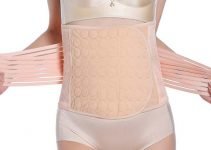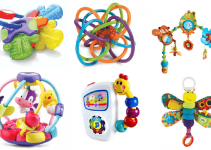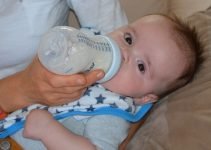The total body water content of infants is much higher at 70% than adults (within 60%). Moreover, infants are prone to fast water loss, as most body membranes are sensitive to toxins.

All this means that diarrhea or increased fluid loss is the primary symptom of many diseases in infants, even for non-intestinal infections.
In many situations, managing total body water content, managing fluid and electrolyte balance is much more vital than managing underlying illness. For example, many infections cause self-limiting illness, but water and electrolyte loss can be life-threatening in these illnesses.
Pedialyte is perhaps one of the best-known brands of oral rehydration salts and liquids. It helps with quick rehydration of the body. In many cases, it may help reduce the severity of the condition and even help prevent intravenous fluid replacement therapy.
The key is starting Pedialyte early enough and providing the right amount at regular intervals.
Managing dehydration in infants is challenging?
Infants are highly susceptible to the effects of dehydration, electrolyte loss. However, higher ingestion of electrolytes may also cause some severe side effects.
That is why Pedialyte clearly states that for infants, one should consult a doctor before starting Pedialyte. Nonetheless, in some instances, consulting a doctor may not be an option.
Due to the high water content in the body and sensitivity to toxins, infants start losing water very quickly. Further, unlike in adults, water loss in infants may occur for numerous reasons, not just due to diarrhea.

In infants, diarrhea and water loss may be the primary symptom of even non-intestinal infections. Just take an example of seasonal respiratory infections. In children, respiratory issues may often begin with watery stool. Further, even a slight rise in the body temperature can considerably increase water loss in kids, as they breathe much faster than adults [1].
There are other challenges in dosing oral rehydration fluids in infants. For example, there may be a considerable variance in body weights among infants of similar age.
Despite all the challenges, prompt rehydration in infants is essential. It must be understood that dehydration remains the number one cause of mortality in this age group.
Fluid loss of up to 3% is classified as mild, 6% to 10% as moderate, and greater than 10% as severe [2].
Oral rehydration is only possible for mild to moderate dehydration. Therefore, it only underlines the importance of giving Pedialyte or other oral rehydration salts early enough.
Severe dehydration has symptoms like altered mental status, tachycardia, weak pulse, drop in blood pressure, lethargy (child may stop crying). Such severe conditions require intravenous fluid therapy [2].
What is Pedialyte?
Oral rehydration salts are pretty simple. In fact, there are many recommendations from various health agencies telling how to prepare oral rehydration salt from commonly available materials. Nevertheless, ready-made solutions like Pedialyte are much superior due to the more balanced content of electrolytes. However, it is vital to understand that too much electrolytes can be as bad as too little.
Pedialyte primarily contains electrolytes like potassium, sodium, chloride, small amounts of glucose, and have added zinc. In-home conditions, ORS is made by adding small amounts of sugar and few pinches of salt to the water, but it is not as good as Pedialyte, as such a solution does not contain potassium or zinc.
Another good thing about Pedialyte is that it comes as a ready-to-use solution. So, no hassle of preparing a solution or making a mistake. Because, high concentration of electrolytes in any fluid can make diarrhea rather worse.
How much Pedialyte for 6 month old?
 Regretfully there is no clear-cut formula that may be used. Everything depends on the severity of dehydration, the severity of diarrhea.
Regretfully there is no clear-cut formula that may be used. Everything depends on the severity of dehydration, the severity of diarrhea.
In mild conditions, one may give 50 ml to 100 ml of Pedialyte after every passage of watery stool.
However, suppose dehydration is severe due to continuous passing of stools and fever. In that case, one should give 50 ml to 100 ml per kg of body weight during two to four hours [2].
Do not try to give it in large amounts. Vital is to give frequently and in small quantities to avoid vomiting.
Here, a word of caution, as already mentioned, children are very sensitive to any kind of treatment, which may be good and bad. It is good in a way that studies show that oral rehydration is highly effective in children, preventing hospitalization. Bad in a way, that children may accumulate excessive amounts of electrolytes in the body, causing side effects [3].
Another vital question for caretakers could be how long can or should one continue giving Pedialyte? Usually, in milder cases, that is not difficult to decide as Pedialyte is only given after passing of watery stool, and that too in small amounts.
However, suppose the conditions of child keep getting worse and becomes moderately severe. In that case, one should only give Pedialyte till medical help becomes available. It is vital to understand that infants’ health may deteriorate in hours, thus a need to seek medical attention and keep a close eye on vital signs.
If, fortunately, things get better, one may stop giving Pedialyte and instead feed a child with nourishing liquid foods, mothers’ milk, and so on.
Finally, it is worth knowing that although simple electrolyte fluid-like Pedialyte may be life-saving in some cases, it does not treat infections, underlying causes of diarrhea.
So, there will away be a need to treat the underlying disease condition.
References
- Walker CLF, Perin J, Katz J, Tielsch JM, Black RE. Diarrhea as a risk factor for acute lower respiratory tract infections among young children in low income settings. J Glob Health. 2013;3(1):010402. doi:10.7189/jogh.03.010402
- Vega RM, Avva U. Pediatric Dehydration. In: StatPearls. StatPearls Publishing; 2021. Accessed August 25, 2021. http://www.ncbi.nlm.nih.gov/books/NBK436022/
- Marin L, Sanér G, Sökücü S, Günoz H, Neyzi O, Zetterström R. Oral rehydration therapy in neonates and young infants with infectious diarrhoea. Acta Paediatr Scand. 1987;76(3):431-437. doi:10.1111/j.1651-2227.1987.tb10494.x




 Dr. Preet Pal SB is a physician (M.D. Medicine) with a specialization in diabetes (Fellowship in diabetes, Royal Liverpool Academy). He has a particular interest in metabolic disorders, considering that they are rising in every corner of the world, more so in India.
Dr. Preet Pal SB is a physician (M.D. Medicine) with a specialization in diabetes (Fellowship in diabetes, Royal Liverpool Academy). He has a particular interest in metabolic disorders, considering that they are rising in every corner of the world, more so in India.